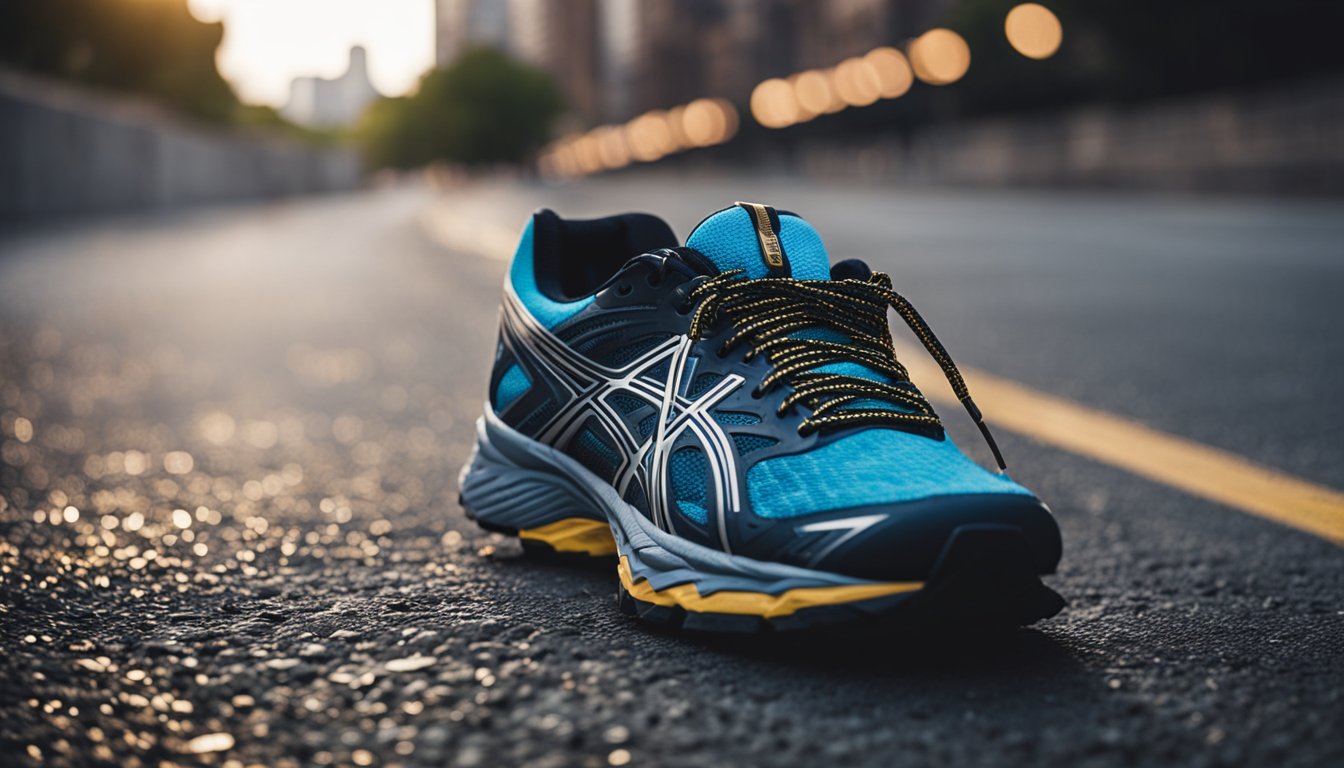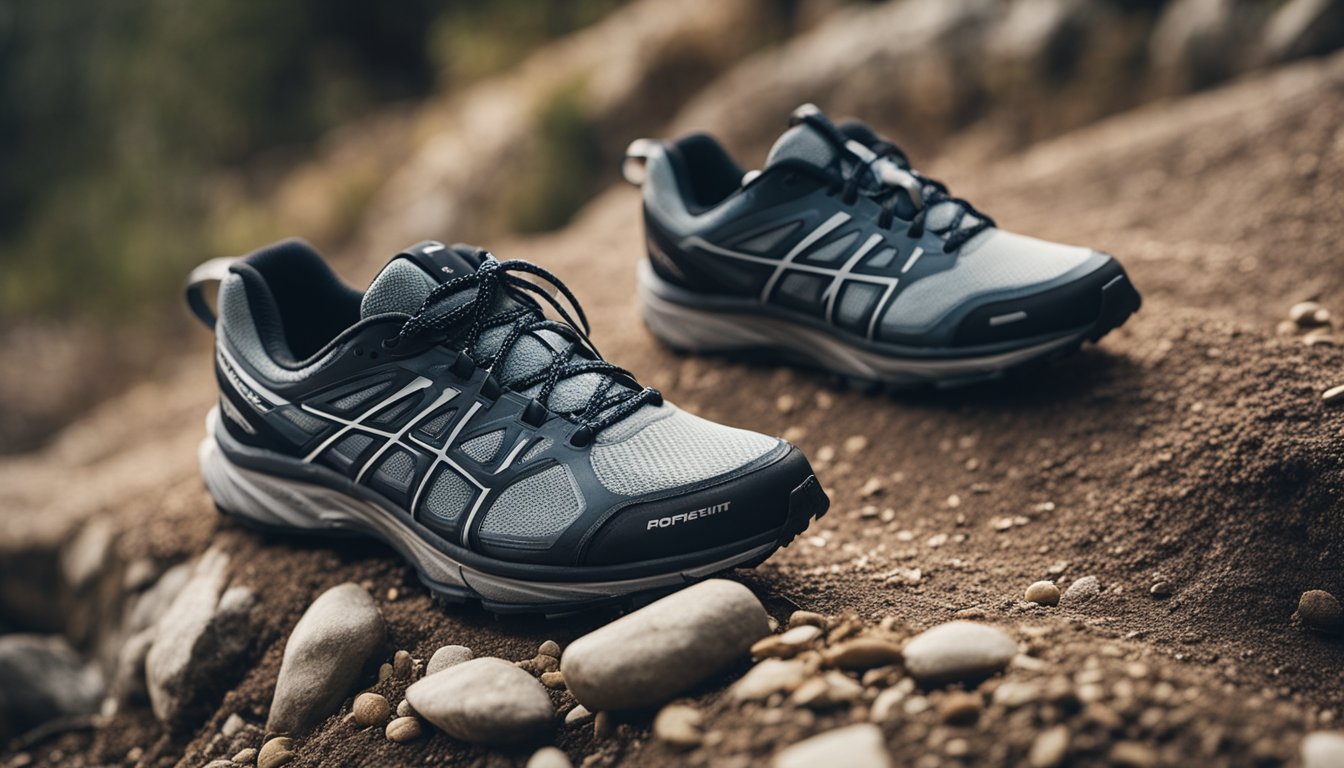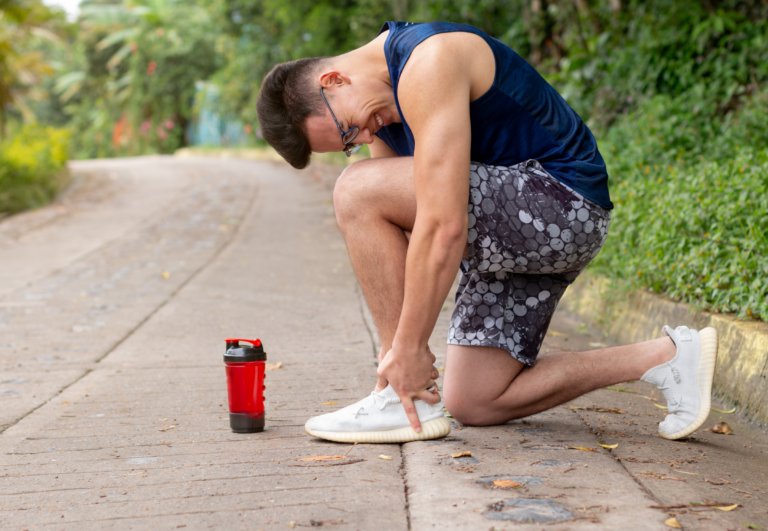Can You Run with Trail Running Shoes on Pavement or Roads?
Can You Use Trail Running Shoes on Paved Roads? – Trail running shoes are designed for off-road terrain, offering enhanced grip, protection, and stability for uneven surfaces. However, they can also be used on paved roads with some trade-offs.
The aggressive tread patterns and sturdier build of trail shoes may lead to faster wear on hard surfaces and might not provide the same level of comfort or efficiency as a road running shoe. While a trail shoe offers ample cushioning and protection, their heavier construction and reduced flexibility can affect running form on pavement.
For runners who frequently switch between terrains, hybrid shoes might be a suitable option, providing a balance between the ruggedness of trail shoes and the lightness and smoothness of road shoes.
Ultimately, while trail running shoes can handle pavement, they are over-engineered for it, and their design features are best utilized off the beaten path.
Can You Use Trail Running Shoes on Paved Roads?

When you lace up your trail running shoes, you’re probably thinking of unpaved paths and rugged landscapes. But what if your route includes paved roads? Rest assured, your versatile trail shoes can handle both terrains, although they’re engineered with nature’s demands in mind.
Key Differences:
- Sole & Traction: Trail shoes have a tougherrubber outsole to grip uneven surfaces, which may not be optimal for the consistent, hard surfaces of roads.
- Cushioning: Trail shoes offer ample cushioning, yet road shoes are typically more designed for the repetitive impact of asphalt.
- Upper: The upper part of trail shoes is robust to withstand debris, whereas road shoes emphasize breathability and flexibility.
Stability & Support:
- Trail shoes provide stability for unpredictable terrain, which could translate to a less responsive but more protective experience on pavement.
Weight:
- Trail shoes are sturdier, adding extra weight compared to the lightweight design of road running shoes.
Durability on Roads:
- Wearing your trail shoes on pavement can accelerate wear, particularly on the sole, as it’s not designed for asphalt.
| Feature | Trail Running Shoes | Road Running Shoes |
|---|---|---|
| Sole Durability | Higher wear on pavement or concrete | Designed for long-lasting road use |
| Traction | Aggressive for trails | Smooth for roads |
| Cushioning | Ample for varied terrain | Optimized for pavement |
| Weight | Generally heavier | Lighter design |
While trail shoes can take you on a paved road jaunt, remember they excel off the beaten path, offering protection and traction that’s over-engineered for the pavement. But remember they are not ideally designed for concrete paths as a road shoe would be. So you can enjoy your run, knowing your shoes will go the distance, no matter where you choose to explore.
What Happens if You Use Trail Shoes on Roads?
When you switch from the unpredictable terrain of trails to the consistent surfaces of roads, your trail running shoes interact differently with the pavement.
Here’s what you might notice:
Sole and Traction: Trail shoes have thicker soles with pronounced lugs for grip on dirt and mud. On roads, these lugs can’t dig into the surface, which can result in less stability and a strange sensation underfoot. Typically, you’ll find that a trail running shoe tread will wear down faster than a standard road running shoe on roads compared to trail terrain.
Weight and Cushioning: You’ll find trail shoes to be heavier due to added protection and cushioning designed for uneven terrain. While cushioning is still beneficial on roads, the extra weight might make you feel less nimble during your exercise routine compared to lighter road shoes.
| Feature | Trail Running Shoes | Road Running Shoes |
|---|---|---|
| Sole | Thick with large lugs | Slimmer with flatter tread |
| Traction | High, for various terrains | Moderate, for pavement |
| Weight | Generally heavier | Lighter |
| Cushioning | Substantial for rough terrain | Balanced for pavement impact |
Upper Construction: Trail runners often have a reinforced upper to withstand brushes with nature. This can result in reduced breathability, which might make your feet hotter on roads during long runs.
Support and Stability: The stability features in trail shoes, helpful on rocky paths, could feel overly stiff on pavement. This isn’t necessarily uncomfortable but differs from the more flexible road shoes tailored for the even ground.
Flexibility: Your trail shoes may not flex as much as road shoes, leading to a less efficient energy transfer with each step on the harder road surface.
Running in trail shoes on pavement won’t cause immediate harm, but the experience can be less comfortable and possibly less efficient compared to running in road shoes designed for that purpose.
Trail Running Shoes vs Road Running Shoes

When deciding between trail running shoes and road running shoes, your choice impacts your running experience. The design and structure of the shoes differ notably to cater to their specific environments.
Key Differences
Trail running shoes are engineered for off-road terrain, providing extra traction and stability. In contrast, road running shoes are optimized for pavement, prioritizing lightweight designs and cushioning for repetitive impacts.
Sole Construction and Traction
- Trail Running Shoes: Feature rugged outsoles with larger lugs for grip on uneven, loose, or slippery surfaces.
- Road Running Shoes: Have smoother, flatter soles with minimal patterns to maintain efficient and stable contact with hard, flat surfaces.
Weight and Cushioning
- Trail Running Shoes: Tend to be heavier due to durable materials and added protection like rock plates. They have moderate cushioning to balance protection and ground feel.
- Road Running Shoes: Are generally lightweight, with more cushioning to absorb the repetitive impact of the pavement and provide a smoother ride.
Upper Structure and Stability
- Trail Running Shoes: Boast robust uppers which are resistant to tears, and a firmer toe box that shields your feet from debris.
- Road Running Shoes: Often feature breathable mesh uppers for better air circulation and a flexible structure for comfort during longer runs.
Adapting Trail Shoes to Pavement
When you consider taking your trail shoes to the pavement, you should be aware of how they’ll handle the transition, particularly regarding durability and comfort, as well as the overall impact on your running form.
Effects on Durability and Comfort
Your trail shoes are built sturdy to withstand harsh trail conditions, but when you take them on pavement, the harder surface can accelerate the wear on the sole.
If your trial shoes have a rock plate designed to protect your feet from sharp objects may be less necessary on pavement, it can also affect the shoe’s flex and your comfort over time.
| Features | Trail Shoes | Road Shoes |
|---|---|---|
| Sole | Thicker with aggressive traction | Thinner and smoother |
| Cushioning | Firmer for protection | Softer for pavement comfort |
| Durability on Road | May wear faster | Designed to last longer |
Impact on Running Form and Injury Prevention
Trail shoes might alter the way you run on pavement. The additional grip and protection can lead to a different running form, which may have implications for injury prevention. Ensure your shoe’s cushioning and midsole structure still promote a natural gait to avoid unnecessary stress on your legs during your fitness routine.
When to Choose Hybrid Shoes
If your runs transition between trails and pavement frequently, you might consider hybrid shoes. These provide a balance with moderate cushioning, durable yet not overly aggressive grip, and a flexible sole for comfort on various surfaces.
| Shoe Type | Best For | Features |
|---|---|---|
| Trail Shoes | Off-road terrain, occasional pavement | Protective from trail debris and obstacles, high traction |
| Road Shoes | Mainly pavement, smooth paths | Lightweight, optimized cushioning |
| Hybrid Shoes | Alternating between trail and pavement | Balanced flex, durability |
By knowing these differences, you can make an informed decision about when and where to wear your trail shoes, ensuring a better running experience.






